Qualitative Coding with Microsoft Word
In this article, I’m going to show you an example of hand coding using Microsoft Word.
One of the major approaches that we use to analyse qualitative data, such as interview transcripts, documents, or observation notes is qualitative coding.

Qualitative Coding Approach
When conducting a qualitative study, you most likely need to do a form of qualitative coding.
Qualitative coding is a step in thematic analysis, meaning we first come up with codes and then we look for a pattern of shared meaning between the codes to develop themes.
Now qualitative coding mainly includes taking things apart, which is analysis, which is normally followed by bringing things together or synthesizing and coming up with themes.
Now, we can either do qualitative coding by hand or hand coding, which is normally through the use of the normal tools such as Microsoft Word, or we can do it through the use of qualitative data analysis tools such as Nvivo.
Let’s begin with hand coding using Microsoft Word.
Before we begin coding, let’s have a few definitions.
Let’s first define a code.
Definition of a code
A code is simply a label or an interpretive statement to particular information that’s important to a research question.

Code Definition
So, by performing qualitative coding, we are simply tagging or labelling important information in our qualitative data set.
We are going to be adopting two approaches to coding,
Which are:
Semantic coding, which is based on the shallow or obvious meaning of language.

Semantic Coding
Latent coding, which is based on the deeper meaning of a given statement or passage.

Latent Coding
Let’s use an example of an interview transcript for the research titled Experiences of Women with Immune Treatments for Fertility.

Example Study
Before we begin analysing our transcript using Microsoft Word, I want to first show you where I get transcripts that I use for my articles and this is a place you can go and get transcripts that you can use to practice thematic analysis or qualitative coding in this case.
So, I get all my transcripts from this site called Figshare.
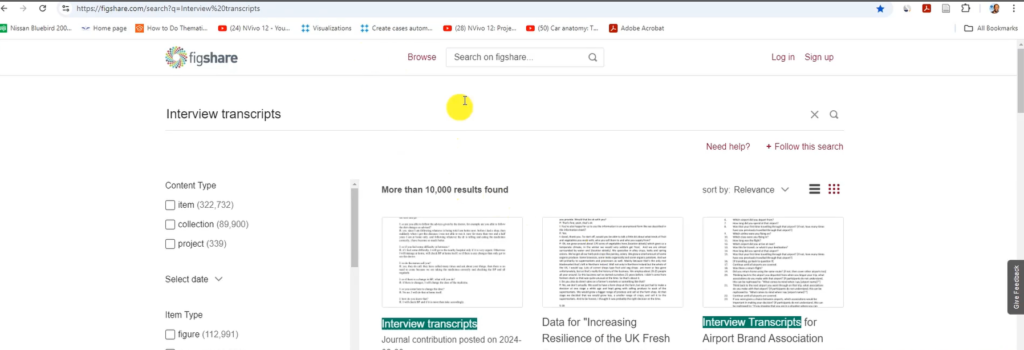
Figshare
You go to the Figshare website and then search transcripts and you’ll get different types of transcripts that different scholars have shared freely for people to use, maybe to practice their coding and all that.
Qualitative Coding with Microsoft Word
Now, let’s perform qualitative coding using Microsoft Word.
For this article, I’m going to use an example of a transcript related to the topic of experiences of women with immune treatments for fertility.
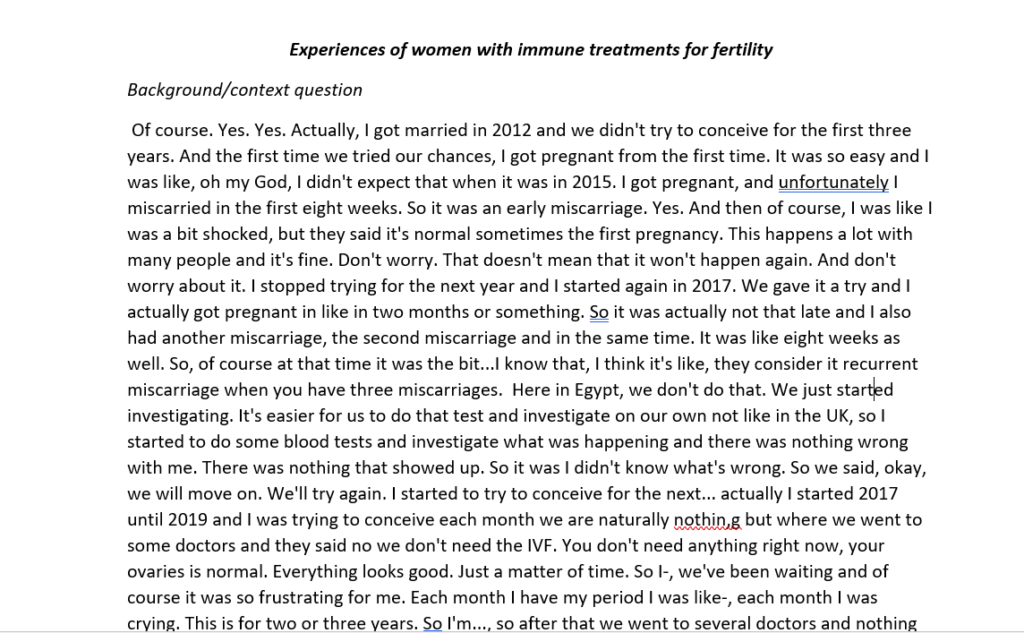
The Transcript to be Analysed
When we are doing qualitative coding using Microsoft Word, we use the comment function.
You can see the different comments, and these are the kind of codes that we are going to have.
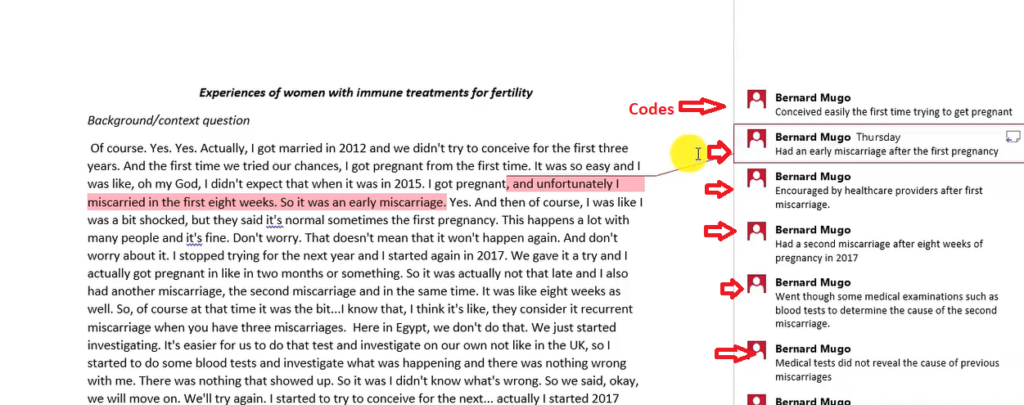
Codes Generated after Qualitative Coding
I’m going to go and delete all these comments.
Okay, and let’s code together, because this is an article about qualitative coding.
Just to repeat that a code is a label or an interpretive statement to particular information that’s important to our research question.

Definition of a Code
Having known that, it means we only code information that’s important to our research question.
Let’s code only information that’s important to our research question and we provide labels and tags to that information.
Let’s begin.
Let’s read background or context question.
“Of course, yes, yes. Actually, I got married in 2012, and we didn’t try to conceive for the first three years, and the first time we tried our chances, I got pregnant for the first time. It was so easy, and I was like, oh my God, I didn’t expect that when it was in 2015.“
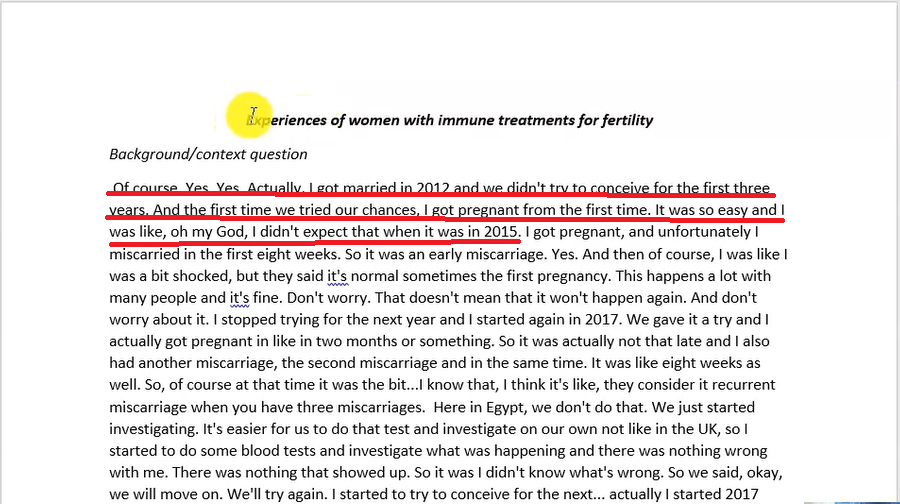
A Section of the Transcript
These are experiences of women with immune treatments for fertility.
What we are getting here, Is, and the first time we tried our chances, I got pregnant for the first time. It was so easy. I was like, Oh my God, I didn’t expect that when it was in 2015, this statement here implies that.
I highlight, I right click. I go to new comments. This is how we do qualitative coding in Microsoft Word.
Then, I provide an interpretation for this statement, or what this participant is trying to say. Because this study is related to experiences of women with immune treatments for fertility, I can say, this code is conceived easily the first time.

The Code Conceived Easily the First Time is Created
And then “I got pregnant and unfortunately, I miscarried in the first eight weeks. It was an early miscarriage.“
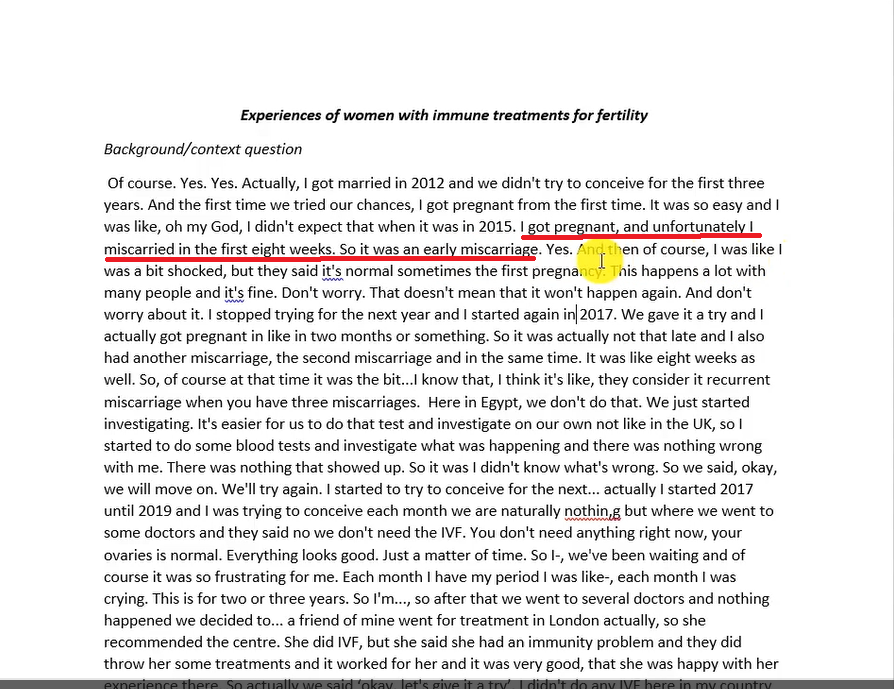
A Section of the Transcript
Highlight that and then let’s code this as had and early miscarriage.

The Code had a Miscarriage is Created
Now you can see how we are coding.
We basically code sometimes based on what a person is saying directly. Other times, we try to look for deeper meaning.
These are the two ways of coding. When we code exactly what a person is saying, we call that semantic coding or looking for the obvious meaning of certain statements.

Semantic Coding Definition
On the other hand, in some instances, we look for the deeper meaning so as to get the actual statement or what a person is trying to say.
That’s called latent coding, which is looking for a deeper meaning of words or statements.

Latent Coding Definition
Let’s continue.
“Yes, and then of course I was like a bit shocked, but then they said it’s normal sometimes the first pregnancy. This happens a lot with many people and it’s fine. Don’t worry.“
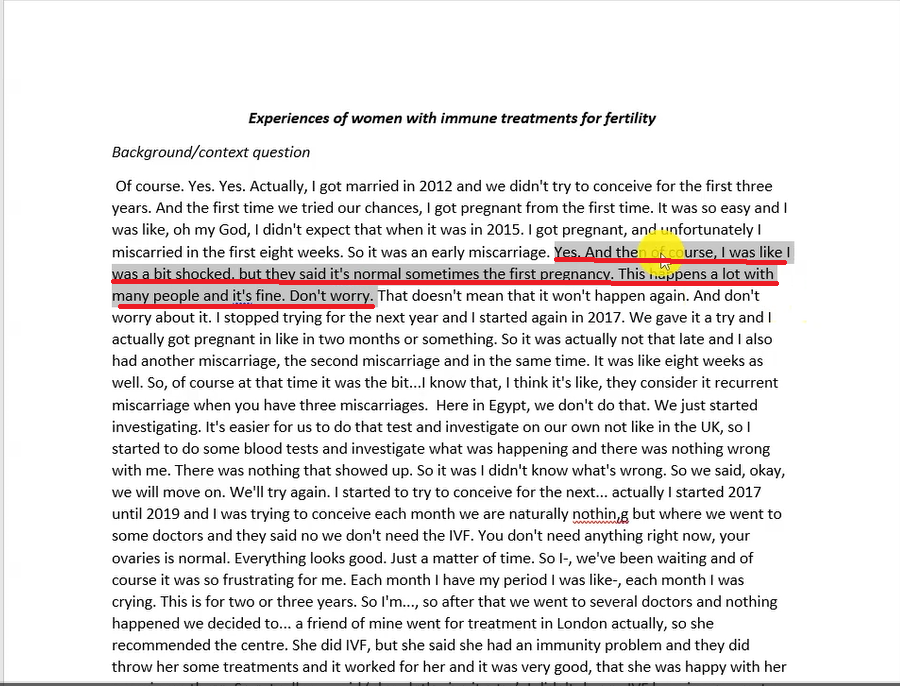
A Section of the Transcript
We can see that statement, right click new comment is received significant support from health care givers after the first miscarriage.
Okay, that’s another code.
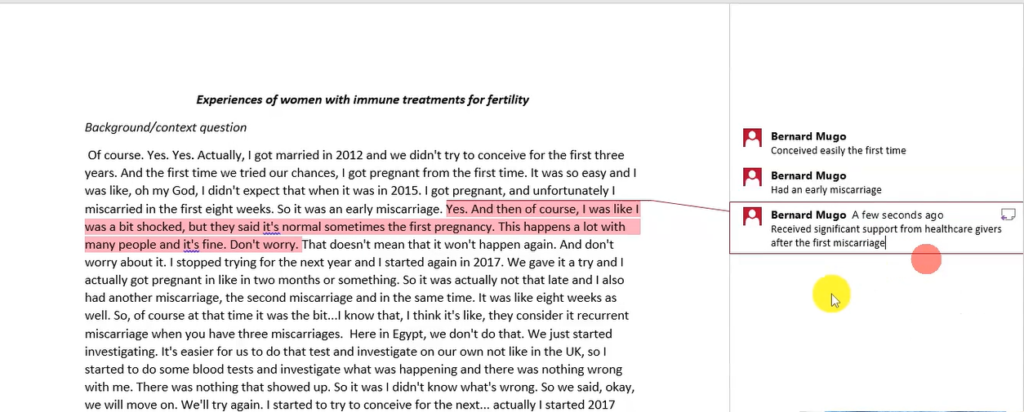
The Code Received Significant Support from Health Care Givers after the First Miscarriage
“I stopped trying for the next year and I started again in 2017. We gave it a try and I actually got pregnant in like two months or something. So it was actually not that late.“
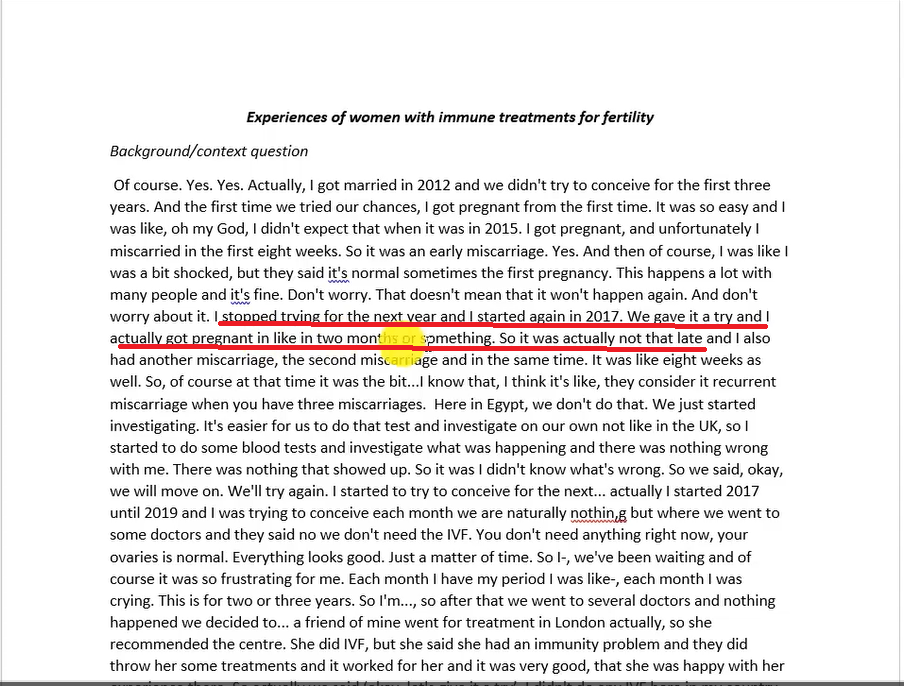
A Section of the Transcript
I can highlight this statement and say conceived easily on the second attempt.
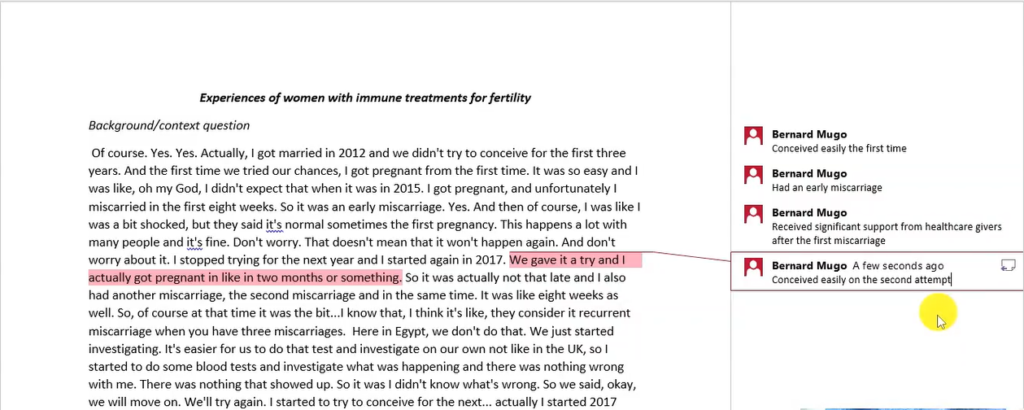
The Code Conceived Easily on the Second Attempt is Created
“So, it was actually not that late and I also had another miscarriage. The second miscarriage and in the same time.“
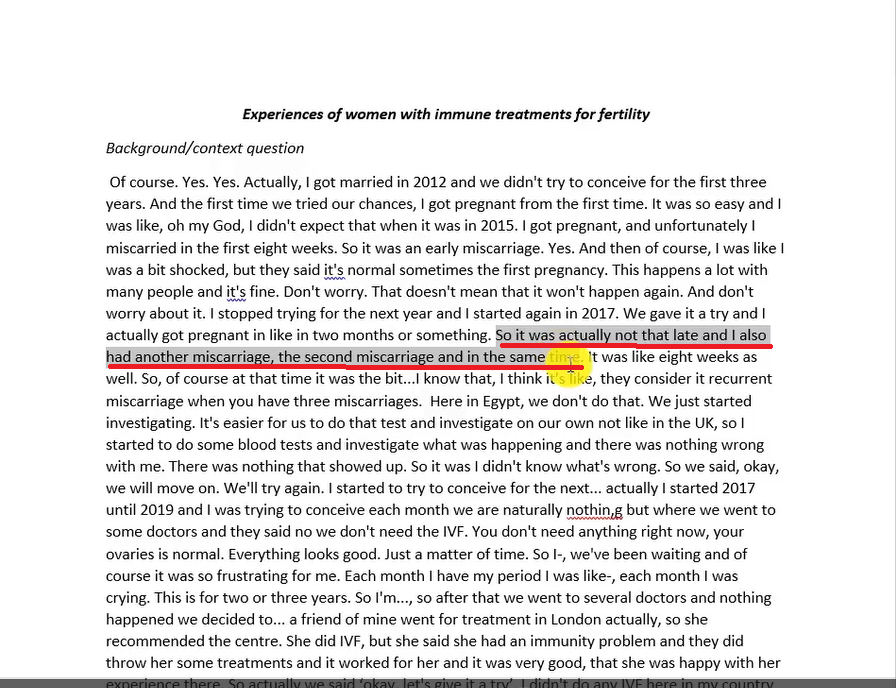
A Section of the Transcript
We can see this statement is experienced a second miscarriage.
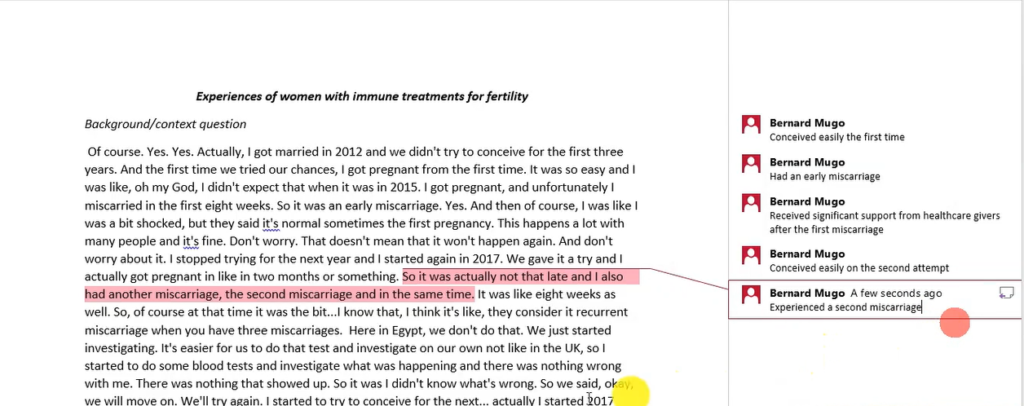
The Code Experienced a Second Miscarriage
“it was like eight weeks as well, so of course, at that time it was a bit, I know that, I think, they consider it recurrent miscarriage when you have three miscarriages. Here in Egypt, we don’t do that, we just started investigating. It’s easier for us to do that test and investigate on our own, not like in the UK. So I started to do some blood tests and investigate.”
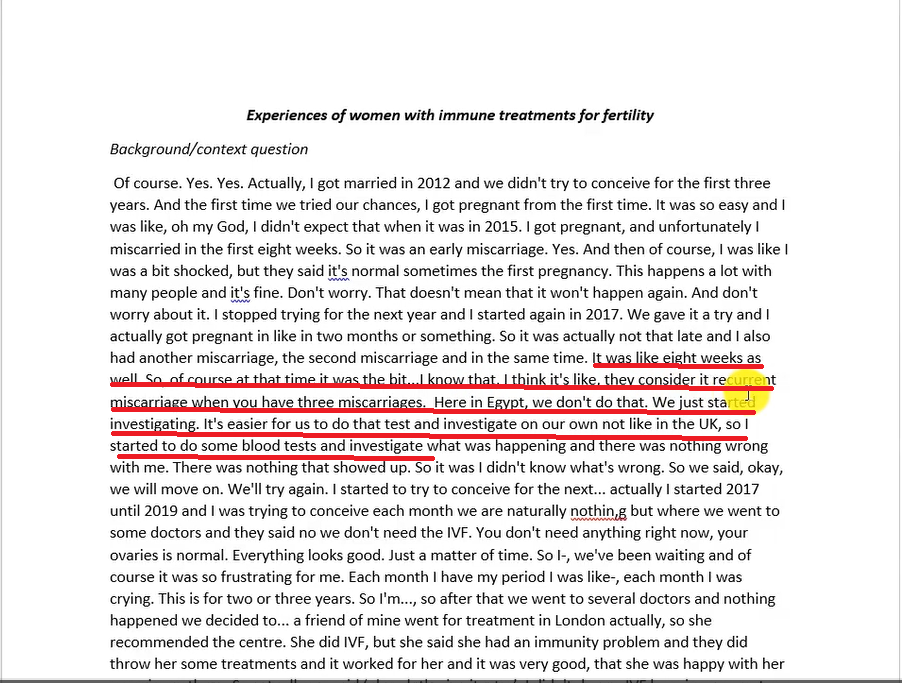
A Section of the Transcript
Highlight the statement and say performed some investigations after the second miscarriage
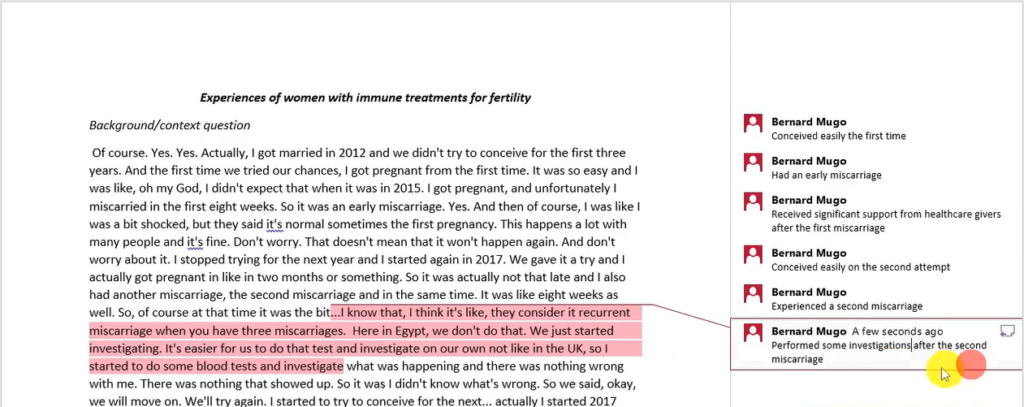
The Code Performed some Investigations after the Second Miscarriage is Created
And then, “there was nothing wrong with me, there was nothing that showed up, so I was, I didn’t know what was wrong. So we said, okay, we’ll move on.”
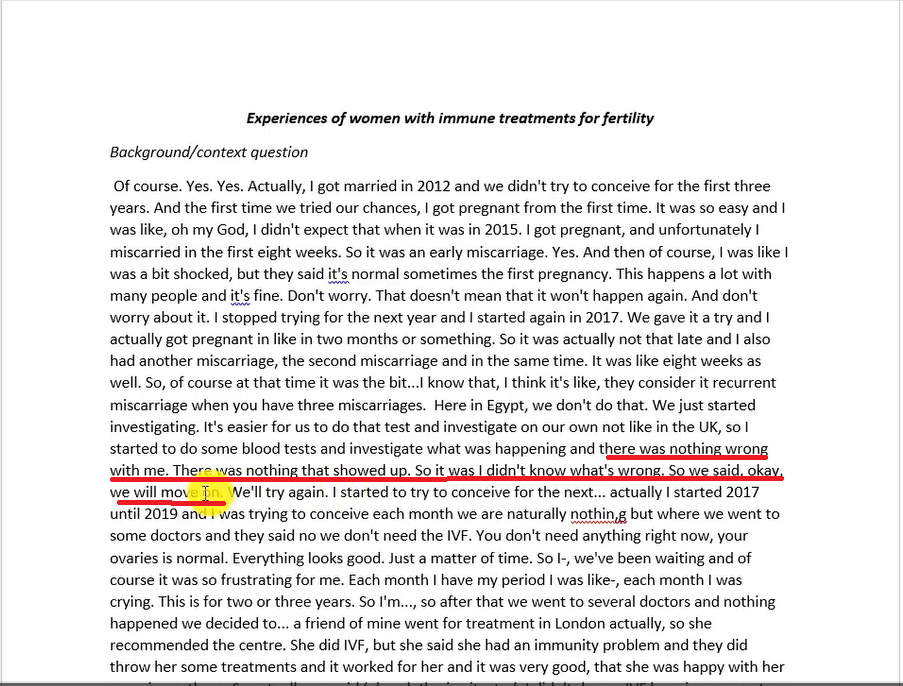
A Section of the Transcript
Let’s look at this.
right click new comments and say investigations did not show any causes of past miscarriage.
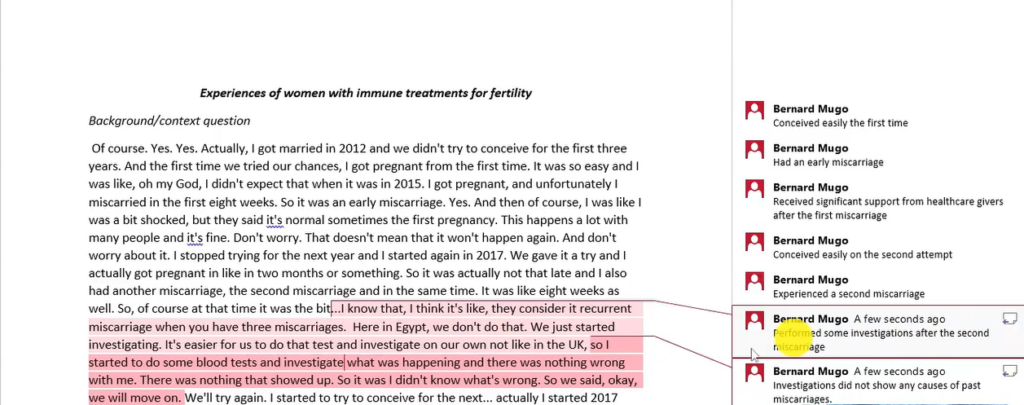
The Code Investigations did not Show any Causes of Past Miscarriages is Created
So, that’s how you do qualitative coding in Microsoft Word.
You just get the codes, and codes are interpretive labels or statements to particular information that’s important to our research questions or objectives.
These are the codes that we are able to get.
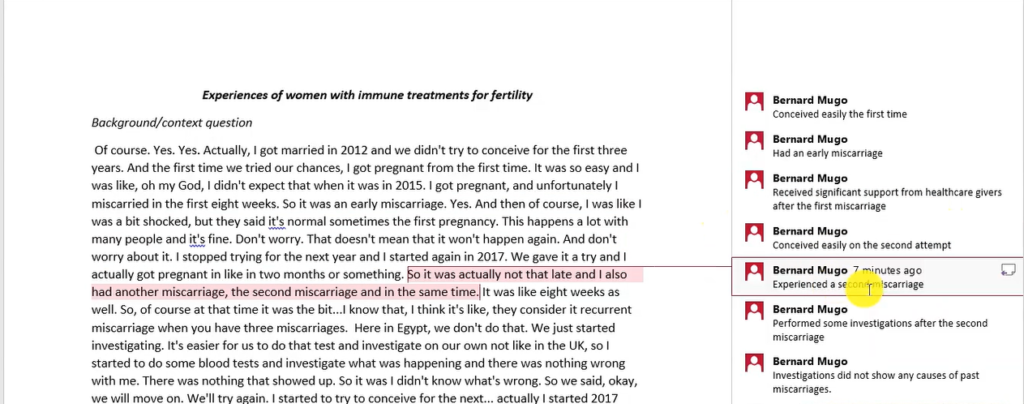
The Generated Codes
Later on, you might combine these codes together to form deems. For example, conception journey can be a theme that includes so many of these codes.
Then we have miscarriage experiences, which is another theme probably, which can have different codes.
Themes come later. First you do coding, then you look for a pattern of shared meaning between the codes to get themes.
But this article is not about themes. I have other articles about that such as Thematic Analysis Examples: Inductive and Deductive (step by step) .
This article is about qualitative coding.
That’s how we do qualitative coding through Microsoft Word by using the comment function in Word.
And if you look at these codes, you can see whether or we can try to see or to categorize them into the two main ways of coding, which is semantic coding that relies on the obvious meaning of words and the latent coding, which relies on the deeper meaning of words.
Conceived easily the first time. Let’s look at this. At the first time we tried our chances, I got pregnant for the first time. It was so easy, and I was like, oh my god, I didn’t expect that when it was in 2015.
The code here is conceived easily the first time. That’s an example of a kind of a semantic code, because this code doesn’t do so much interpretation.
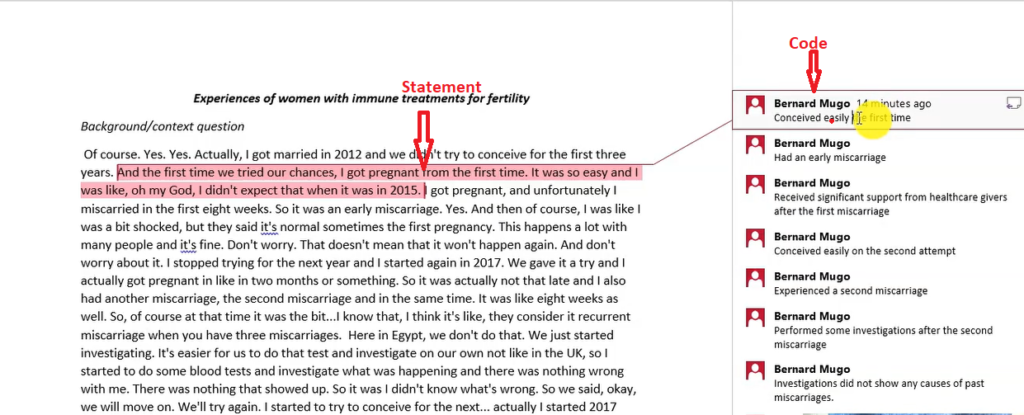
A Semantic Code
Let’s continue. I got pregnant, and unfortunately, I miscarried the first eight weeks. It was an early miscarriage.
You can see, had an early miscarriage, which is the exact words that the interviewee uses.
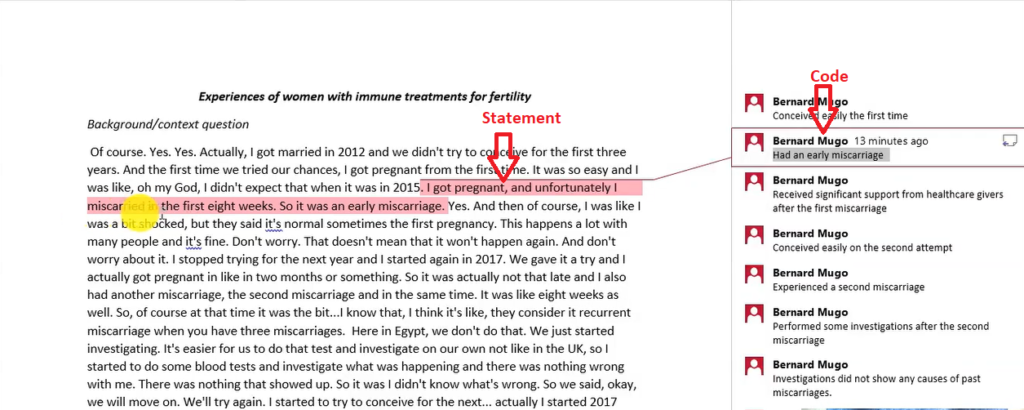
A Semantic Code
That’s another example of a semantic code.
Let’s continue. Received significant support from healthcare givers after the first miscarriage.
Let’s read the quote. Yes. And then of course I was like, I was a bit shocked, but they said it’s normal. Sometimes the first pregnancy, this happens a lot with many people and it’s fine. Don’t worry.
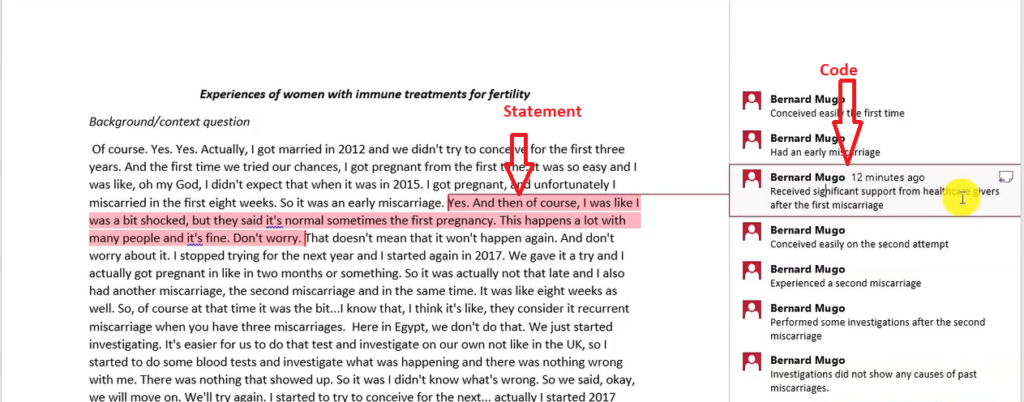
A Latent Code
That’s an example of a latent code.
Then we have another code.
We gave it a try and I actually got pregnant in like two months or something. The code is conceived easily on the second attempt.

A Latent Code
that’s an example of a latent code, which is again, not obvious, but we can imply that from what the patient is saying.
Then experienced a second miscarriage.
So it was actually not that late and I also had another miscarriage, the second miscarriage.
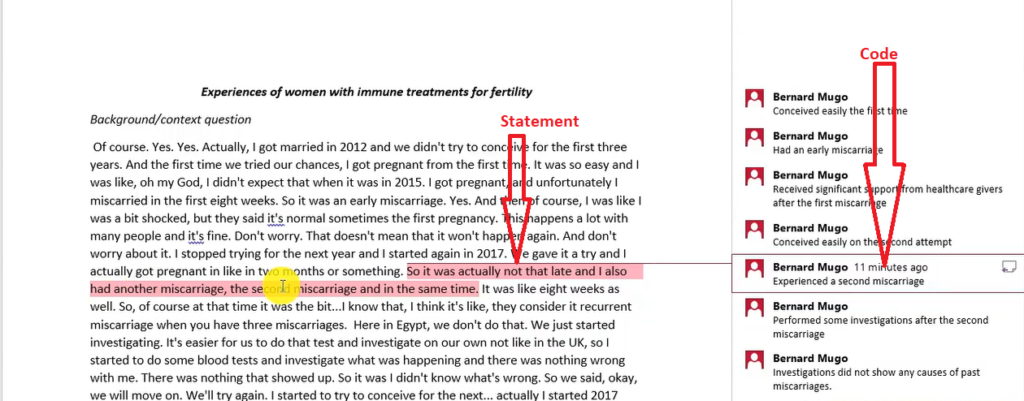
A Semantic Code
That’s an example of a semantic code. Because we are just rephrasing exactly what the interviewee says.
When we are coding, ideally, we can have either latent or semantic codes, like concurrently.
Don’t worry about whether they are latent or semantic codes that you are getting, just worry about getting accurate codes.
So that’s how we perform qualitative coding in Microsoft Word.

Pingback: Qualitative Coding in Nvivo